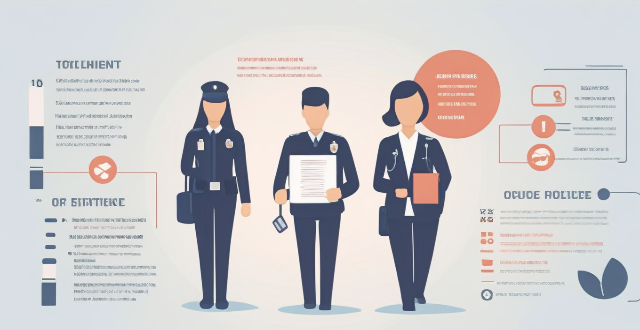Education Gender

Can you explain the concept of gender gap in education ?
The gender gap in education refers to the disparity in educational opportunities, outcomes, and achievements between males and females. It encompasses various aspects of the education system, including access to education, quality of education, and academic performance. Girls may face cultural, social, and economic barriers to attending school, while schools may not provide adequate facilities or resources for female students. Additionally, girls tend to outperform boys in subjects such as reading and writing, while boys tend to do better in math and science. Addressing the gender gap in education requires attention and action from educators, policymakers, and society as a whole to create a more equitable and just education system.

What are the current global challenges in achieving gender equality in education ?
Gender equality in education is a fundamental human right and key to economic growth, social development, and poverty reduction. However, several challenges hinder its achievement globally. One major challenge is the lack of access to education for girls due to poverty, cultural beliefs, and traditional roles assigned by society. Another challenge is gender bias in curriculum and teaching methods that lead to a lack of representation and role models for girls while perpetuating harmful stereotypes about gender roles. Sexual harassment and violence against girls in schools also hinder gender equality in education by creating an unsafe learning environment that can lead to low self-esteem, anxiety, depression, and dropping out of school altogether. Insufficient funding for girls' education prevents schools from providing proper facilities, materials, or trained teachers needed to support girls' learning. Addressing these challenges requires policy changes, increased funding, improved curriculum design, teacher training programs, and awareness campaigns targeting both parents and communities.

How does climate change affect gender equality ?
The text discusses the impact of climate change on gender equality, highlighting increased vulnerabilities for women in health, economics, and social factors. It further points out how climate change exacerbates existing inequalities through gender-based violence and educational setbacks. However, it also identifies opportunities for resilience and empowerment through resilient livelihoods, enhanced participation, and improved health and safety measures. The conclusion emphasizes the importance of addressing climate change with a gender lens to achieve sustainable development and a more equitable future.

What steps can be taken to achieve gender equality in the workplace ?
To achieve gender equality in the workplace, organizations should implement diversity policies, encourage women to apply for leadership roles, address sexual harassment, offer flexible work arrangements, and foster an inclusive culture. These steps will create a fair and diverse work environment where everyone feels valued and respected regardless of their gender identity.

How should women behave in a mixed-gender professional environment ?
Navigating gender dynamics in a mixed-gender professional environment requires women to exhibit confidence, professionalism, and foster positive relationships with colleagues. Key guidelines include speaking up, taking credit for achievements, dressing appropriately, conducting oneself with integrity, collaborating with colleagues, networking, challenging stereotypes, seeking feedback, supporting diversity, mentoring others, staying authentic, and pursuing personal growth. By following these principles, women can thrive professionally and contribute positively to the workplace culture.

How can we promote gender equality in climate policy making ?
Promoting gender equality in climate policy making is crucial for ensuring inclusive policies that address the needs of all genders and harness the potential of everyone in combating climate change. Key strategies include ensuring equal representation of men and women at all levels of decision-making, addressing gender-specific impacts of climate change, promoting education and training, collaborating with women's organizations, and creating safe spaces for open expression. By implementing these measures, we can move towards more effective and equitable solutions to tackle climate change.

How have women's empowerment initiatives affected gender equality globally ?
The essay discusses the impact of women's empowerment initiatives on gender equality globally. The initiatives have increased access to education and training for women, leading to their active participation in public life. They have also provided economic empowerment through financial resources, microfinance loans, and entrepreneurship training programs, resulting in greater gender equality in the workplace. Health and reproductive rights have been improved through awareness campaigns and advocacy for policies supporting family planning and contraception. Finally, these initiatives have encouraged women's political participation, creating a more diverse and representative government. Overall, women's empowerment initiatives have played a crucial role in promoting gender equality worldwide.

How does gender equality affect participation in competitive sports ?
Gender equality is a fundamental human right that ensures individuals are not discriminated against based on their sex. In the realm of competitive sports, gender equality can significantly influence participation rates, access to resources, and overall opportunities for athletes. This discussion will explore how gender equality affects participation in competitive sports. The importance of gender equality in sports includes equal opportunities, media coverage and representation, financial support and sponsorship, and safety and well-being. Challenges faced due to lack of gender equality include unequal participation rates, limited career opportunities, and cultural barriers. Strategies to promote gender equality in sports include policy changes, education and awareness, and supportive infrastructure development. In conclusion, gender equality plays a crucial role in determining participation rates in competitive sports. By addressing issues such as unequal opportunities, media representation, financial support, safety concerns, and cultural barriers, we can create a more inclusive environment that encourages females to engage actively in sports. Through policy changes, educational initiatives, and supportive infrastructure development, we can promote gender equality within the world of competitive sports, ensuring that talent and passion are the only determining factors for success.

What role do education systems play in promoting scientific literacy among women ?
Education systems play a crucial role in promoting scientific literacy among women by providing equal access to education, encouraging female teachers, offering extracurricular activities, addressing gender bias, and providing mentorship programs.

Why is it important to address gender bias in educational materials and curriculum ?
Gender bias in educational materials and curriculum can have a significant impact on the learning experience of students. It is important to address this issue to ensure that all students receive an equitable education that promotes their academic success and personal growth. Reasons for addressing gender bias include promoting equity and inclusivity, encouraging diversity of thought and perspective, improving academic outcomes, and fostering empathy and respect among students. As educators, it is our responsibility to create a learning environment that values and supports the unique needs and experiences of all students.

How can we address the intersectionality of climate change and gender inequality ?
Addressing the intersectionality of climate change and gender inequality requires a comprehensive approach that considers both environmental and social dimensions. Key points include recognizing the intersectionality, including women in decision-making processes, promoting gender-sensitive climate policies, supporting women's access to education and empowerment, ensuring access to sustainable energy and resources, addressing gender-based violence, and fostering collaboration and partnerships. By taking these steps, we can work towards a more equitable and sustainable future for all.

How can we ensure that climate change adaptation and mitigation strategies are gender-sensitive ?
To ensure that climate change adaptation and mitigation strategies are gender-sensitive, it is important to recognize the gendered impacts of climate change, involve women in decision-making processes, address gender inequalities in access to resources, promote gender-sensitive research and data collection, and provide gender-sensitive education and training. By taking these steps, we can ensure that climate change adaptation and mitigation strategies are designed and implemented in a way that takes into account the different needs and priorities of women and men.

What are the gender dimensions of climate-induced displacement and migration ?
The text discusses the gender dimensions of climate-induced displacement and migration. Women and girls are often more vulnerable to health and safety risks during displacement, face challenges in accessing essential resources such as food, water, shelter, and education, and may lose social networks and support systems that are crucial for their well-being. To address these unique challenges, it is essential to incorporate gender-specific needs into humanitarian response efforts, including providing safe spaces, ensuring access to basic needs, supporting economic empowerment, and promoting gender equality.

What policies can low-income countries implement to promote gender equality and women's empowerment ?
This article discusses various policies that low-income countries can implement to promote gender equality and women's empowerment. It highlights the importance of education, healthcare, economic development, legal protections, and cultural norms in achieving these goals. The article suggests policies such as equal access to quality education, vocational training programs, reproductive health services, microfinance programs, non-discriminatory hiring practices, protection from violence, property rights, positive media representation, and community mobilization. By implementing these policies, low-income countries can create a more inclusive and equitable world for all genders.

How does climate change exacerbate gender inequality in access to resources and decision-making ?
Climate change exacerbates gender inequality by disproportionately affecting women and girls in access to resources and decision-making. Women often have limited access to resources such as water, food, and land due to cultural norms, lack of education, and poverty. They also have limited participation in decision-making processes due to cultural norms and lack of education. To address these issues, it is important to prioritize gender equality in climate change adaptation and mitigation strategies by ensuring that women's voices and experiences are taken into account when making decisions.

What is the role of gender equality in achieving climate justice and sustainability ?
Gender equality is a key component in achieving climate justice and sustainability. It ensures equal opportunities for all individuals to participate in decision-making processes related to climate change mitigation and adaptation strategies, including access to education, healthcare, and economic resources. Gender equality recognizes the vulnerabilities of women and girls affected by climate change, promotes inclusivity, enhances resilience, drives innovation, and addresses intersectionality. Strategies for achieving gender equality in climate action include incorporating gender perspectives into policies, increasing representation, providing resources, encouraging collaboration, monitoring progress, educating stakeholders, advocating for legal protections, promoting cultural change, supporting research, and sharing best practices.

How can we use sports to promote gender equality and empower women and girls ?
Promoting gender equality and empowering women and girls through sports involves increasing visibility, ensuring fair representation, improving access and inclusivity, providing education and training, implementing policy and legislation, promoting health and wellness, encouraging economic empowerment, engaging the community, and fostering cultural change. These efforts aim to break down barriers, challenge stereotypes, and create opportunities for women and girls to thrive both on and off the field.

How can companies promote gender equality in the workplace ?
In full: Companies can promote gender equality in the workplace by implementing gender-neutral hiring practices, providing equal opportunities for advancement, ensuring equitable pay and benefits, fostering an inclusive culture, addressing harassment and discrimination, supporting women in non-traditional roles, and celebrating achievements and diversity.

In what ways does education empower women socially and politically ?
Education is crucial for women's empowerment, enabling them to challenge societal norms and contribute more fully to society. It fosters increased awareness, improved socioeconomic status, and enhanced social relationships. Education also leads to greater political participation, policy influence, and promotion of gender equality. Overall, education enriches society by improving the lives of women and contributing to a more equitable world.

What initiatives can help reduce the gender pay gap in various industries ?
Initiatives to Reduce the Gender Pay Gap in Various Industries discusses measures that can help reduce the gender pay gap, which is a persistent issue affecting women across various industries. Reducing this gap requires a multifaceted approach that involves both government policies and private sector initiatives. Government policies include equal pay legislation, transparent salary data, family-friendly policies, women's empowerment programs, anti-discrimination laws, gender quotas, and tax incentives for companies. Private sector initiatives include internal audits, equal opportunity hiring practices, mentorship and sponsorship programs, promotion transparency, diversity training, pay negotiation workshops, performance reviews, employee resource groups, supplier diversity programs, and board diversity goals. By implementing these initiatives, both government entities and private corporations can contribute to a more equitable workplace where gender does not determine one's earnings potential. Closing the gender pay gap is crucial not only for fairness but also for unlocking the full potential of the workforce and driving economic growth.

How do female entrepreneurship programs contribute to economic growth and gender equality ?
Female entrepreneurship programs contribute to economic growth and gender equality by providing women with resources, training, and support. They create job opportunities, diversify the economy, and generate tax revenue. These programs also address challenges faced by women in business, such as access to capital, networking, and breaking down stereotypes. Overall, they promote a more diverse and innovative economy while fostering equal opportunities for all individuals regardless of gender.

How do women's health and education projects address global disparities ?
Women's health and education are crucial for global development, affecting communities' well-being. Women's health projects ensure access to quality healthcare services, including prenatal care and family planning. Education initiatives promote gender equality by increasing girls' enrollment rates and eliminating classroom biases. Economic empowerment projects provide job training and microfinance loans to women entrepreneurs. These efforts create a more equitable world where everyone can thrive.

What policies can governments implement to promote educational equity ?
Policies for Promoting Educational Equity summarizes key policies governments can adopt to ensure equal access to quality education for all students, regardless of their socio-economic background, race, gender, or any other factors. These policies include universal access to education, quality education, inclusive education, reducing socio-economic disparities, promoting gender equality, addressing racial and ethnic disparities, and collaboration and partnerships with non-profit organizations, private sector companies, and community groups.

What are the latest updates in education policy ?
The latest updates in education policy focus on improving the quality of education, increasing accessibility, and preparing students for future challenges. Key areas of reform include remote learning and online education, inclusive education, curriculum reform, teacher professional development, and funding and resource allocation. These changes aim to create a more effective and equitable educational system for all students.

What strategies have been successful in promoting female education in developing countries ?
Promoting female education in developing countries is crucial to socio-economic development. Successful strategies include community engagement, government policies, education system reforms, partnerships, and technology integration. These efforts aim to ensure every girl has the opportunity for quality education.

What policies have countries implemented to ensure equal access to education for both sexes ?
Policies for Equal Education Access: Key Policies and Challenges

How can parental attitudes towards girls' education be changed ?
The text discusses the issue of parental attitudes towards girls' education and the need to change these attitudes in order to promote gender equality. It identifies cultural beliefs, economic factors, and lack of awareness as key factors that influence parental attitudes. The text suggests strategies for change, including education and awareness campaigns, economic incentives, encouraging girls' participation in school, addressing cultural barriers, and collaborating with local organizations. Overall, the text emphasizes the importance of understanding the underlying factors behind parental attitudes and taking a multifaceted approach to promote gender equality in education.

How has sports contributed to gender equality ?
Sports have contributed to gender equality by increasing participation, equal pay, media coverage, and female leadership in sports administration.

How do cultural factors influence women's access to education ?
The text discusses cultural factors that influence women's access to education, including gender roles, perceptions of capability, social norms, economic priorities, religious teachings, and ethnic customs. These factors can either facilitate or hinder educational opportunities for women, shaping their roles in society and the economy. Addressing these barriers requires a multifaceted approach that includes challenging harmful cultural norms, promoting gender equality, and advocating for policies that support female education.

What role do education and literacy play in advancing women's rights ?
Education and literacy are fundamental rights that play a crucial role in advancing women's rights. They empower women, enhance their decision-making abilities, and enable them to participate fully in society. Education and literacy provide women with the knowledge and skills necessary to make informed decisions about their lives. Educated women are more likely to delay marriage and childbearing, have fewer children, and make better health choices for themselves and their families. Education and literacy increase women's economic opportunities by enabling them to access better jobs and higher incomes. Educated women are more likely to be employed in professional or skilled positions, which leads to greater financial independence and bargaining power within households. Educated women are more aware of their health rights and are better equipped to make decisions related to their own health and well-being. They have improved access to healthcare services, understand the importance of preventive care, and are less likely to suffer from diseases associated with poverty and lack of education. Education and literacy enhance women's political engagement by providing them with the necessary knowledge and skills to participate actively in the political process. Educated women are more likely to vote, run for office, and hold leadership positions. Their increased political participation leads to policies that promote gender equality and address issues affecting women and girls. Education and literacy help to break down gender stereotypes and promote social equality between men and women. When women are educated, they are more likely to challenge discriminatory practices and traditions that limit their rights. Educated women are also more likely to advocate for gender equality in their communities, leading to a more equitable society for all.